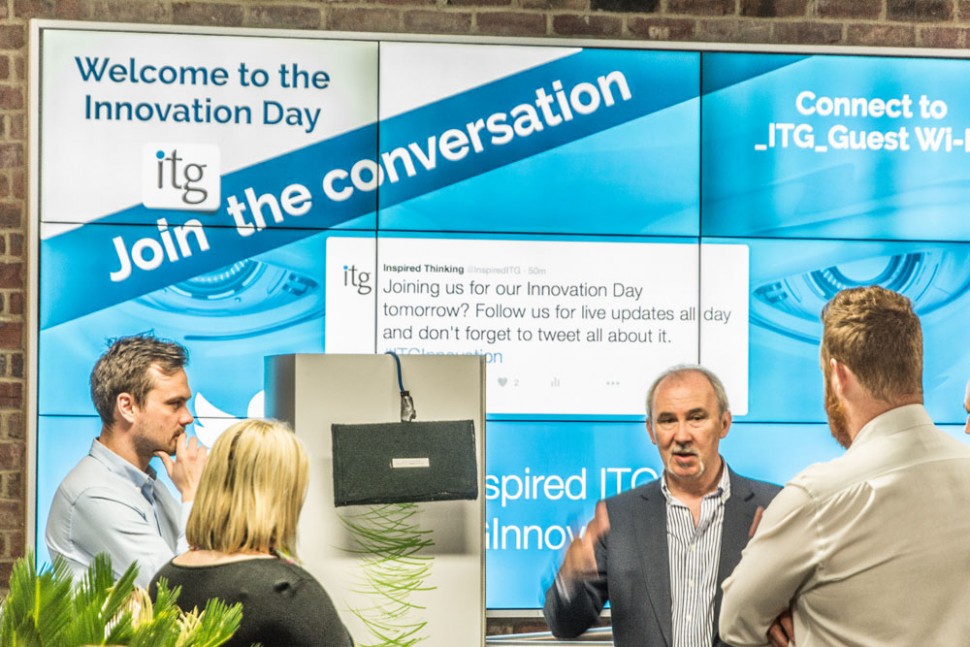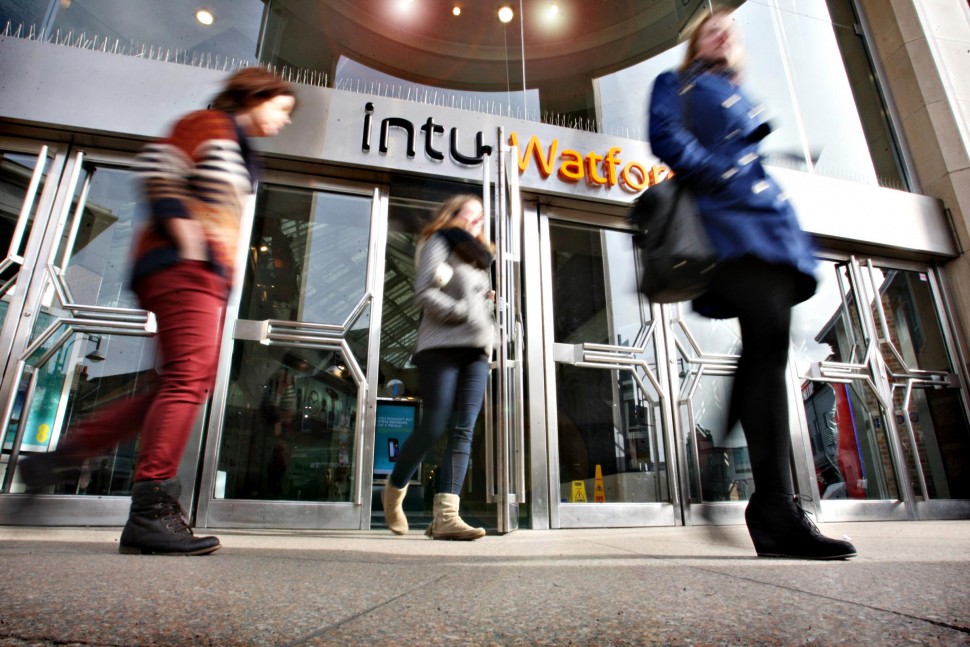Print Services
-
When inviting tenders from suppliers, you should always ask: “If your existing supplier withdraws their service, how would you ensure business continuity?”
Your company may be obliged to review and retender its supplier contracts from time to time. Or maybe you’re not happy with your existing print supplier (or agency or props supplier). Nevertheless, divorcing them and finding someone new can be a real headache.
After all, that marketing agency or print manufacturer might have let themselves go a bit. But at least they understand your quirks. Your likes and dislikes. Even if they don’t always go along with them.
Add to this the risk of a failure in supply if the divorce gets messy, and you could be moving from a business continuity issue to disaster recovery.
Mitigating risk
Let’s say you put £25 million in print a year through your main print supplier. That’s a lot of work for them to lose, and they’re unlikely to be happy about the loss.
They may hold significant assets and imagery of yours that suddenly become difficult to find. Their presses might suddenly become very busy. They may just tell you they’re not interested in a smooth transition to your new supplier, helping to bed them in and handing over the work project by project.
If they simply walk away, can your new supplier pick up the pieces on day one?
New supplier responsibilities
We’ve transitioned in the region of £250 million of print to our supply chain over the past five years. That means we understand how much incumbent suppliers vary in their willingness to play ball with smooth transitions.
We know that an airtight disaster recovery plan to ensure business continuity is essential during a handover between suppliers. Our experience has given us a certain expertise in business continuity – and your new supplier should have that expertise, too.
Requests for proposals (RFP) tend to focus on normal delivery conditions. However, you need to know before you appoint a new supplier how they would cope under extraordinary conditions.
Business continuity plan
Whatever timescale you agree with your new supplier, you should receive guarantees that they can activate their business continuity plan immediately should the supply chain fail.
This should include:
• Full production capacity and capability from day one
• Plan in place to transfer stock to a fully operational warehouse in a timescale that causes no disruption to logistics
• Pre-agreed and named transition team able to be in place from day one
• Ability to deploy any software required to replace an incumbent’s, should this be required
Following this immediate response, you need to ensure that the potential supplier also has a tested plan in place that covers areas (in the case of print) such as materials availability, communications, stock information, data requirements, and much more. Different types of supplier need to cover different areas.
Probably most importantly, they shouldn’t charge you a premium to deliver early. At the proposal stage, ensure their commitment to being fully transparent and guaranteed pricing in the event you trigger the disaster recovery plan during the transition.
Ideally, you want a civilised divorce from your incumbent supplier, where no one talks about disaster recovery.
Nevertheless, if you don’t interrogate your prospective suppliers’ business continuity plans during the RFP process, you may be courting disaster.
-
Simon Ward explains how a day can make a big difference to marketers – especially when it’s dedicated to innovation.
I’ve always been immersed in technology. As CEO of SP Group’s digital arm, I was at the cutting edge of what was on the face of it a very traditional industry – printing.
At ITG, our core offering is based around automation technology, and we’ve just taken our first steps into the big data arena, with our recent addition of ITG Creator.
But even people who run technology companies can struggle to keep up with every development – the time investment can be daunting, especially as not every invention will make it off the drawing board.
Pace of change in technology
It took decades for telephones to reach 50% of the population. It took five years for mobiles to achieve the same penetration. Innovation is not only getting faster, so is its adoption.
Companies with a competitive technology edge are better placed to attract customers than those who are baffled by technology. But there are so many areas of innovation out there, how is a marketer to find the time to keep up with them all?
We decided to help.
Over the past week, our offices have been teaming with clients. This was an innovation for us – generally we only entertain one or two clients at a time. However, over 140 clients, most of them marketers, visited our offices together, but it wasn’t just to see us. We’d invited some guests.
An appetite for innovation
Augmented reality, 3D printing, virtual reality, 360 degree cameras, interactive video, HyperSound technology – there are a huge number of technologies designed to improve retail customer engagement. We sought out the best, and invited their keepers to demo them for our clients.
Marketers from Heineken, Puma, Tesco, Boots, Sainsbury’s and numerous other retailers and brands moved from area to area, scrutinising innovation after innovation, interrogating the technology, and putting faces to buzzwords.
It’s not the most obvious tactic for a technology company, to showcase other people’s products alongside your own. But building a partnership with your clients is about more than simply selling your wares – it involves providing added value, just as they aim to give added value to their customers.
It was an exceptionally successful day, eliciting numerous positive comments. But perhaps the most satisfying were from those who said, “I knew about this technology, but until I saw the demo I didn’t realise it was for us.”
This shows that even marketers who keep up with technological innovations rarely have the time to delve deeply enough to see all the angles. Even when you attend technology exhibitions, you often spend a lot longer tracking down items of interest than you do experiencing the innovations.
A single day spent looking at a dozen specially selected technologies, with the ability to question experts in a relaxed and engaging environment, can give you a significant catch-up.
It’s certainly something we’ll be doing again.
Until next time
Simon Ward
About Simon Ward
Simon Ward ITG – Simon is the founder and CEO of pioneering technology-led marketing company, Inspired Thinking Group (ITG). ITG delivers best-in-class marketing software, procurement and studio services to dozens of blue-chip clients, including Audi, M&S, KFC, PUMA and Heineken.
Simon Ward SP Group – Prior to ITG, Simon founded SP Digital in 1998, and in 1999 bought SP Print to form SP Group, creating innovative marketing and point of sale displays for some of the world’s best-known retailers, including M&S, Sainsbury’s, Holland & Barrett and Calvin Klein.
-
A little over twelve months ago, we were pleased to welcome Heineken as a client. One of the most celebrated brands in the world, the prestigious Dutch brewer runs marketing campaigns across the globe, and Inspired Thinking Group (ITG) was tasked with adapting its below-the-line assets for 178 nations.
Our specialism in local marketing – tailoring national campaigns and assets for often hundreds of individual outlets – was a perfect fit for Heineken. And ITG had the opportunity to demonstrate that oceans and continents, languages and cultures, were no barrier to successful localisation.
Round-the-clock services
But there is another aspect of our business that would benefit our new partner. Our artwork and packaging studio operates 24/7. We are, as it were, ‘always on’ (find out more about Inspired Thinking Group’s studio)
This has proved extremely popular with our UK clients. They know if the work is urgent, they can send us a brief in the afternoon and receive the artwork the following morning – all managed effortlessly through our cloud-based Media Centre platform.
But one chap’s morning is another chap’s evening, and when you’re a company that’s rapidly expanding its services around the globe, you can hardly down tools at 5.30pm Greenwich Mean Time and expect to prosper in a world that never sleeps.
Quality artwork
To speed of content creation and global convenience, add quality. Most mistakes are made when people rush. If you’re scrambling to finish that poster or packaging design before the whistle blows, that’s when the ball gets dropped.
But when there’s another team you can pass the ball on to, the scrambling ceases and calm professionalism prevails. 24/7.
Until next time…
About Simon Ward
Simon Ward ITG – Simon is the founder and CEO of pioneering technology-led marketing company, Inspired Thinking Group (ITG). ITG delivers best-in-class marketing software, procurement and studio services to dozens of blue-chip clients, including Audi, M&S, KFC, PUMA and Heineken.
Simon Ward SP Group – Prior to ITG, Simon founded SP Digital in 1998, and in 1999 bought SP Print to form SP Group, creating innovative marketing and point of sale displays for some of the world’s best-known retailers, including M&S, Sainsbury’s, Holland & Barrett and Calvin Klein
-
Outsourcing your creative or artworking needs to external agencies is a given in marketing. After all, that’s where the expertise lies, and where the resource can be scaled to your requirements.
When we formed Inspired Thinking Group (ITG), we determined that the agency side of our business – our Studio, with its banks of artworkers, packaging and retouching specialists, its copywriters and creatives – had to be available round-the-clock. After all, our clients are international, and the world doesn’t stop at 5.30pm Greenwich Mean Time.
But when you’re creating tens of thousands, or even hundreds of thousands of artworks every year, you have to ensure you have a pretty robust quality control process.
Quality control
Artworkers will review what they’ve created, but it’s not sufficient for them to mark their own homework. Your production and account teams will check the artworks, but often they’ll be looking to see it correctly matches the brief, not always giving artworks that extra level of scrutiny they require.
Dedicated quality control teams are of course the way to go: people with the ability to apply a forensic level of analysis to anything that’s thrown at them.
They can be an odd sort, of course. I recently overheard one of our QC team ask his fellows the following question: “Would you say Chelsea are better than Arsenal?”
Sounds like a simple enough query, but after a short pause, the answer came back. “No. I’d say Chelsea is better than Arsenal. In this instance, you need to use ‘is’ because you’re referring to the team as a singular entity rather than individuals acting independently.”
So, you wouldn’t necessarily want them at your dinner party, but you do want them poring over your artworks.
A lesson from the publishing industry
But there’s more to efficient quality control than employing the right individuals. You also need the best possible processes in place. And where do you find those?
Strangely enough, not in the agency world, but in the world of publishing. No matter how tight our deadlines, how great our workload, national newspapers have been confronting these problems for a lot longer, and have evolved a pretty robust system.
The key lesson we took from publishing is that quality control isn’t something you do at the end of the process: it’s something you do right at the start. When our Studio receives a new creative or bespoke brief from a client, our production managers don’t give it straight to the artworkers, they give it to QC to review.
The process
The brief goes through an in-depth level of analysis – the crucial process of prequalification, before it gets anywhere near InDesign or Illustrator. Grammar and spelling are checked. Questions are asked – is this offer clear? Are there any legal implications? Are all the images correct? Is there any ambiguity in the brief? Is any information missing? If necessary, questions are fired back to our account teams and clarification sought.
This can delay getting it on to a designer’s desktop – something that can initially trouble traditionalists, who don’t feel the job has been started until they see it being designed on a Mac. However, once they realise that prequalification considerably increases the accuracy and speed of the process (through better briefs and vastly reduced amends rounds), they soon see the benefit.
Once the artwork has been created, it pays a second visit to QC for the traditional proofreading stage – to ensure the artwork has been created to brief and all the elements are correct.
The result is an enviable accuracy rate for our Studio, and a team I can always call on if I ever want to know the correct plural of octopus.
Until next time…
About Simon Ward
Simon Ward ITG – Simon is the founder and CEO of pioneering technology-led marketing company, Inspired Thinking Group (ITG). ITG delivers best-in-class marketing software, procurement and studio services to dozens of blue-chip clients, including Audi, M&S, KFC, PUMA and Heineken.
Simon Ward SP Group – Prior to ITG, Simon founded SP Digital in 1998, and in 1999 bought SP Print to form SP Group, creating innovative marketing and point of sale displays for some of the world’s best-known retailers, including M&S, Sainsbury’s, Holland & Barrett and Calvin Klein.
-
Engineering your supply chain
I’m extremely pleased to announce that Inspired Thinking Group has been appointed to manage the print procurement of shopping centre manager and owner, intu. We manage all the print for a lot of big companies now, and if it’s not too immodest to say so, we do it rather well.
There’s no magic to it, of course (although employing a team of top-notch print experts is a good starting point), but to mark this new partnership with intu, I thought it might be a good idea to share one or two pointers on how to get the best from your print supply chain.
This is one the biggest bugbears facing marketers today. When you have to produce hundreds of thousands of posters, leaflets and the panoply of POS, the last thing you have time for is selecting the best possible printer for every job.
Instead, the temptation is to fall back on the one or two tried-and-tested suppliers you’ve worked with for years: they know your products after all, and they’ve pushed out the boat on a number of occasions to get the job done, and well… you probably feel a bit disloyal looking at other options.
Loyalty is a good thing. You want good relations with your suppliers. Not only is it good for business, but we’re all human. Much more satisfying to run a successful business and be nice to your suppliers. I’ll return to the topic of loyalty at the end of this blog.
At the same time, one of your favourite printers might be excellent at one kind of work, but not be properly set up for another. Out there, there’s probably another printer who has the exact equipment you need for that specific job, and who can turn it around more quickly, at a higher quality and a better price.
When you’re spending millions on print, even a slight re-engineering of your supply chain can shave a significant slice off your marketing budget. And that’s where we come in.
The first factor in our success is an incredibly well-engineered supply chain. We don’t own any printers, which means we don’t have to give work to our own people just to keep the presses busy. Instead, we audit printers in our supply chain thoroughly and regularly, advising them on how to upgrade their equipment and practices to make them more competitive. At the same time, we get to know exactly what kinds of job they are best at, and which they aren’t.
This means that when any job comes in, we immediately know the four or five printers who will provide the highest quality work and turn the job around in the required time. Now comes the second factor: competitive tension.
We cherry-pick the four or five best printers for each job and send them an RFQ (request for quote). This is a completely automated process run through our Media Centre platform, so we always have a record of every quote we’ve ever received for every kind of job.
When the selected printers supply their quote, we can choose the best price, knowing full well that we’ve not only scored on quality, turnaround time and suitability, we’re also paying the lowest price for the job (the amount of work we can place generally guarantees a highly competitive quote).
Over hundreds, or even thousands of jobs, these relatively small cost saving can amount to hundreds of thousands, or even millions of pounds – far more than it costs for the dedicated account managers we install alongside your marketing department to take the print burden off you.
And there’s another bonus too (I said I’d come back to loyalty). If you feel a bit bad about moving work from your favoured suppliers to a new, efficiently engineered supply chain, we have an answer for that too.
Often, these legacy printers need upskilling and uptooling to get them up to scratch. We frequently help with that process, advising them how to step up to the level required to join our roster of approved printers. In the long run, they may even get more work for our other clients than the work they lose from you.
It’s not often in business that everyone can be a winner, but it’s very satisfying when it happens.
Until next time…
About Simon Ward
Simon Ward ITG – Simon is the founder and CEO of pioneering technology-led marketing company, Inspired Thinking Group (ITG). ITG delivers best-in-class marketing software, procurement and studio services to dozens of blue-chip clients, including Audi, M&S, KFC, PUMA and Heineken.
Simon Ward SP Group – Prior to ITG, Simon founded SP Digital in 1998, and in 1999 bought SP Print to form SP Group, creating innovative marketing and point of sale displays for some of the world’s best-known retailers, including M&S, Sainsbury’s, Holland & Barrett and Calvin Klein.




